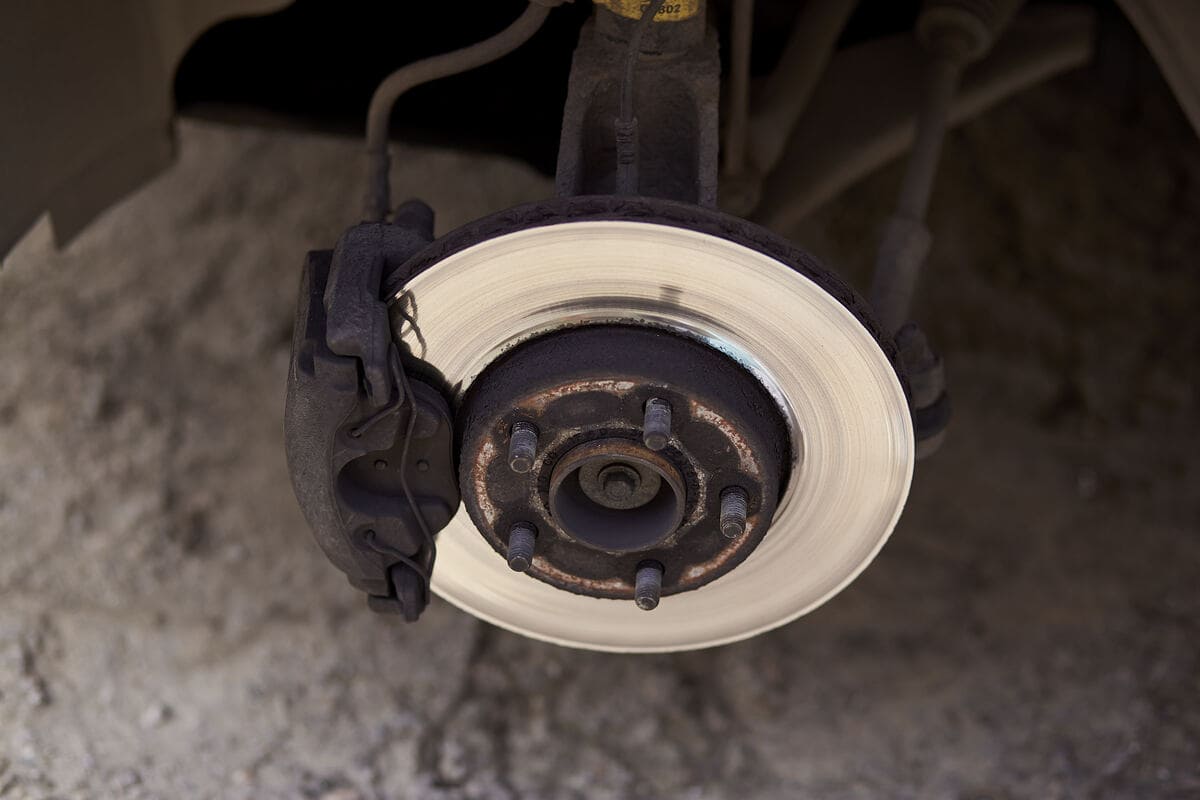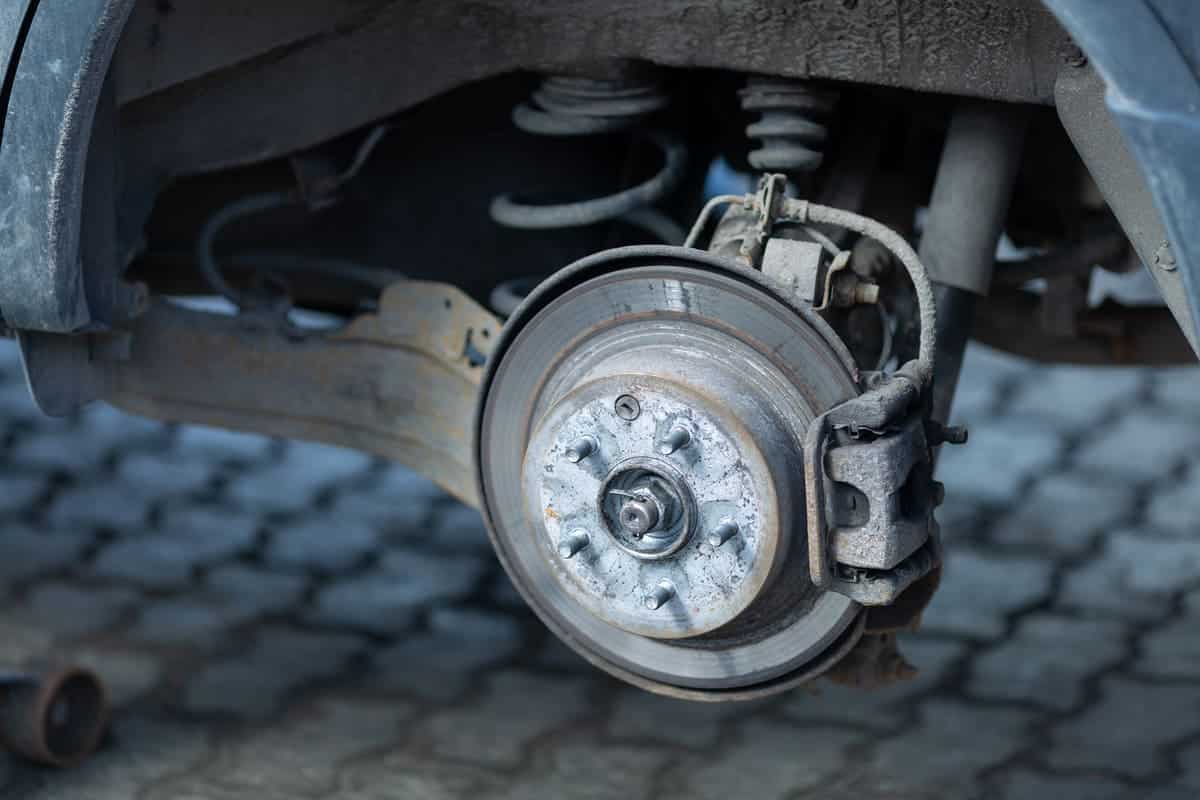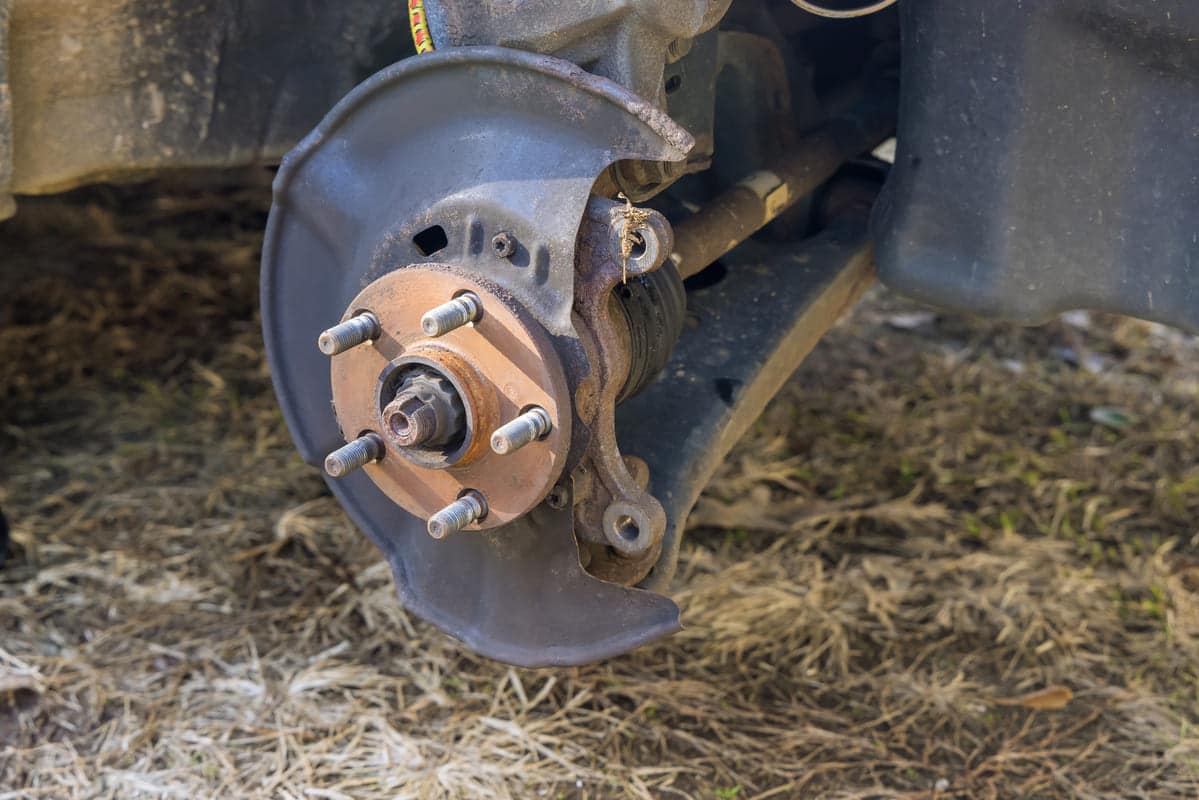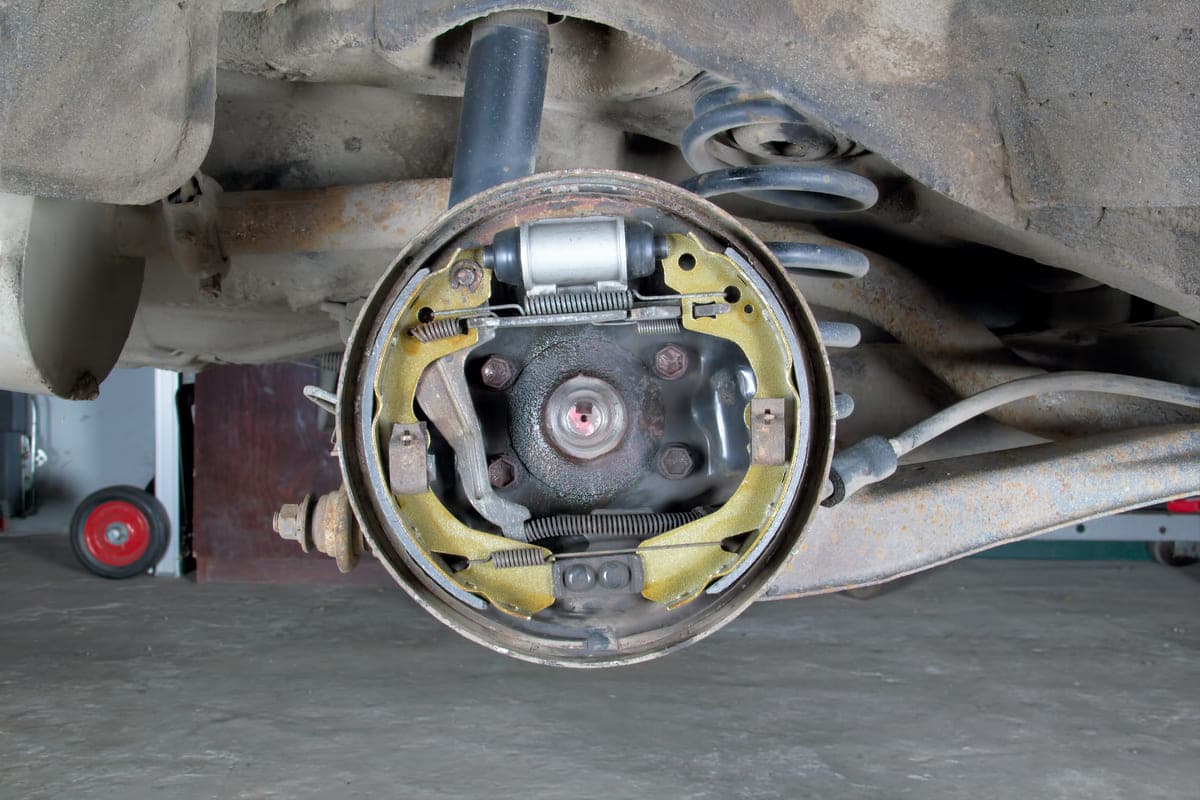How to Identify Common Ford Expedition Brake Problems?
The braking system of the Ford Expedition is crucial for safe driving, it helps you stop smoothly and avoid accidents. When the braking system is not working well it can put you and your passengers at risk.

Knowing how to spot brake issues early can save you from costly repairs and a safer driving experience. With the right knowledge and tools you can get a clear understanding of common brake issues and diagnose yourself and take action before they get worse.
What Are the Basics of Brake System Components?
The brake system of a is complicated with each component working together to stop safely. Here’s a breakdown of the key parts and how they work:
Brake Pads and Rotors
Brake pads press against the rotors, creating friction to slow down the vehicle. Over time, both pads and rotors wear down, reducing braking efficiency and causing squealing or grinding noises. Regularly inspecting and replacing worn pads and rotors is crucial for keeping brakes responsive and safe.
Brake Calipers
Brake calipers hold the brake pads in place, allowing them to grip the rotors when you press the brake pedal. When calipers fail, they can stick, causing uneven braking or pulling to one side. Signs of caliper issues include a spongy brake pedal or feeling the vehicle drag even after releasing the brakes.
Brake Fluid and Lines
Brake fluid transfers pressure from the brake pedal to the brake pads. Leaks or old fluid reduce braking power and may cause a soft brake pedal. Checking for fluid leaks and ensuring fluid levels are maintained can prevent brake failure and keep the system functioning smoothly.
Brake Sensors and Warning Lights
Modern Expeditions have sensors that monitor brake performance. These sensors trigger warning lights on the when they detect a problem, such as low brake fluid or worn pads. Paying attention to these warnings can help you catch issues early, avoiding further damage.
Each part of the requires proper care for reliable performance. Regular maintenance, along with understanding these key components, can help you keep your Expedition’s brakes working effectively.

Top Signs of Ford Expedition Brake Problems
Spotting brake issues early can . Here’s a list of common signs that something may be wrong with your Ford Expedition’s brake system.
Squeaking, Squealing, or Grinding Noises
Hearing squeaking or squealing when braking often means the brake pads are wearing thin. As they wear down, they produce noise as a warning sign. Grinding sounds can indicate that the pads are completely worn out, causing metal-to-metal contact with the rotors. Ignoring these noises can lead to serious damage to the rotors, making repairs more costly.
Vibrations or Pulsations When Braking
If you feel vibrations or pulsations when pressing the brake pedal, it may signal an issue with the rotors. Warped or uneven rotors create a bumpy surface for the brake pads to grip, causing this sensation. Faulty brake calipers can also contribute to this problem, making the vehicle’s braking unpredictable.
Brake Warning Light
Ford Expedition models come equipped with a brake warning light to alert you to possible problems. This light can activate due to low brake fluid levels, a malfunctioning sensor, or worn brake pads. Ignoring the brake warning light can result in serious issues that compromise vehicle .
Soft or Spongy Brake Pedal
A brake pedal that feels soft or spongy usually indicates air in the brake lines or low brake fluid. This issue affects the pressure needed to engage the brakes, reducing braking efficiency. Checking the brake fluid level and inspecting for possible leaks can help solve this problem and restore normal brake feel.
Vehicle Pulling to One Side When Braking
If your Ford Expedition pulls to one side when braking, it may be due to uneven brake pad wear, stuck calipers, or uneven . This problem not only impacts brake performance but also poses a risk, as it can affect your ability to control the vehicle during stops.
Recognizing these signs early allows you to address brake issues before they worsen. Regular brake inspections can help keep your Ford Expedition safe on the road, preventing unexpected failures and costly repairs.
How to Troubleshooting Common Brake Issues in Ford Expeditions?
Maintaining your Ford Expedition’s brake system means catching issues before they worsen. Below is a step-by-step guide to troubleshooting common brake problems to ensure safe and reliable performance.
Noise Diagnosis
Start by locating the source of brake noises, which often indicate worn parts.
- Squeaking Sounds: Typically caused by worn brake pads, squeaking is a clear warning sign.
- Grinding Noises: Grinding usually means the pads are fully worn, allowing metal parts to scrape. Immediate action is needed to prevent rotor damage.
Listening carefully can help you identify the specific area needing attention, .
Brake Fluid Check
Brake fluid is essential for creating the pressure that allows the brakes to function.
- Check Fluid Level: Open the hood and locate the brake fluid reservoir. The fluid level should fall between the minimum and maximum markers.
- Inspect for Leaks: If fluid levels are low, inspect around the brake lines and under the vehicle for leaks, which can reduce braking effectiveness.
Keeping brake fluid at the correct level and replacing it periodically can help prevent brake failure.
Visual Inspection of Brake Pads and Rotors
A quick look at the brake pads and rotors can reveal wear patterns that signal trouble.
- Brake Pads: If the pad thickness is less than ¼ inch, it’s time to replace them. Uneven wear may indicate a problem with the calipers.
- Rotors: Rotors should be smooth. If they appear grooved or warped, they may need resurfacing or replacement.
Regularly checking the pads and rotors helps you spot wear early, keeping your vehicle safe.
Testing Brake Responsiveness
Ensuring the brakes respond well is key to vehicle safety.
- Soft or Spongy Pedal: Gently press the brake pedal. If it feels soft or spongy, it may indicate air in the lines or low brake fluid.
- Delayed Response: Slow response when braking can signal issues with the master cylinder or brake lines.
Testing brake responsiveness provides an easy way to catch issues that affect braking power.
Inspecting Brake Calipers and Hoses
Calipers and hoses are vital to brake performance.
- Calipers: Look for signs of sticking or seizing, which can cause uneven braking or pulling to one side.
- Hoses: Inspect the hoses for cracks, leaks, or wear, which can lead to fluid loss and reduced braking efficiency.
Identifying caliper and hose issues early keeps the braking system balanced and functional, ensuring safety on the road.
Following these steps helps you maintain a dependable brake system, saving you from unexpected repairs. Regular inspections and quick fixes can keep your Ford Expedition’s brakes in peak condition.

What are the Common Causes of Ford Expedition Brake Problems?
Brake issues in a Ford Expedition can arise from various factors. Here’s a breakdown of the most common causes, helping you identify potential problems before they escalate.
Normal Wear and Tear
Brake components, like pads and rotors, experience natural wear over time.
- Brake Pads: These typically last between 30,000 to 70,000 miles, depending on usage and quality.
- Rotors: Rotors often have a longer lifespan but may still need replacement after extensive use or if they become warped.
Understanding the expected lifespan of these parts can help you plan for timely replacements, avoiding sudden issues.
Driving Habits
How you drive has a big impact on brake lifespan.
- Aggressive Braking: Quick, forceful braking wears down pads and rotors faster, requiring more frequent replacements.
- City vs. Highway Driving: City driving, with more stop-and-go traffic, causes faster brake wear compared to highway driving.
Adjusting driving habits, like braking gradually, can extend brake life and reduce maintenance costs.
Environmental Factors
The environment affects brake performance and durability.
- Dust and Dirt: Accumulated dirt and debris can scratch the rotors and wear pads faster.
- Salt and Moisture: In snowy or coastal areas, salt can corrode metal parts, while moisture increases rust risk.
Regular cleaning, especially after winter or off-road drives, keeps brakes in better shape and limits damage from environmental factors.
Poor Maintenance
Neglecting regular maintenance can shorten the lifespan of brake components.
- Old brake fluid loses effectiveness, leading to soft pedals and reduced braking power.
- Inspections: Regular checks help catch issues like worn pads or low fluid, preventing bigger problems down the line.
Consistent maintenance, including fluid changes and inspections, ensures optimal brake performance and safety.
Recognizing these common causes helps you take proactive steps in maintaining your Ford Expedition’s brakes, enhancing safety, and minimizing unexpected repairs.
References
- 700R4 HQ. Ford Expedition Soft Brake Pedal: Causes & How to Fix. Retrieved from on 12 November 2024.
Preventive Maintenance Tips for Ford Expedition Brakes?
Here are some of the preventive maintenance tips for Ford Expedition Brakes:-
Regular Inspections
Routine brake inspections are crucial for spotting early signs of wear or damage. Look for any visible issues, such as worn brake pads, thinning rotors, or unusual fluid levels. Addressing these issues promptly can prevent further damage and keep repairs affordable.
Fluid Maintenance
Brake fluid is vital for hydraulic pressure, ensuring your brakes respond effectively. It’s generally recommended to replace brake fluid every 30,000 miles or two years, but always check your for the exact interval. Low or contaminated fluid can reduce braking power, so check for any discoloration or unusual smells.
Brake Pad and Rotor Replacement Guidelines
Brake pads and rotors should be replaced based on OEM recommendations, usually every 30,000 to 70,000 miles. Pay attention to signs of wear like squealing noises or reduced stopping power, which indicate it’s time for a replacement. Using OEM parts ensures compatibility and maintains the vehicle’s performance.
Safe Driving Practices
Smooth, gradual braking can significantly extend the life of your brake components. Avoiding sudden stops and maintaining a safe following distance reduces strain on the brakes, helping them last longer. Not only does this save on maintenance costs, but it also enhances overall safety.
Regularly following these maintenance tips helps keep your Ford Expedition’s brake system in top shape, ensuring reliability and safety on the road.
Regular are key to keeping your vehicle safe and performing at its best.
John Clay

Know When to Consult an Expert?
Understanding when to turn to a professional is essential for maintaining your brake system. Some brake issues require expertise and specialized tools to resolve effectively.
Complex Brake Issues
Certain brake problems, such as damaged calipers or complex ABS malfunctions, need a professional touch. Attempting to fix these issues without the right skills can lead to more damage or compromise your safety. An experienced mechanic can diagnose these advanced issues with precision, ensuring a safe and reliable repair.
Recurring Brake Problems
If your brake issues keep reappearing despite attempts to fix them, it’s time to consult an expert. Persistent problems, like recurring squealing or a spongy brake pedal, often indicate underlying issues that require a thorough inspection. A professional diagnosis will get to the root of the problem, saving time and avoiding further complications.
Finding OEM-Certified Service Centers
Choosing an OEM-certified service center has many benefits. Certified mechanics are trained specifically on Ford vehicles and use genuine parts designed for your Expedition. This ensures that your brake repairs meet Ford’s quality standards, which can improve safety and prolong the life of your braking system. Certified centers also have access to Ford’s latest service updates, providing accurate and reliable repairs.
Regularly consulting a certified expert for complex or recurring brake issues is a proactive way to keep your vehicle’s braking system in top condition, enhancing both safety and performance.
Conclusion
Maintaining the brakes on your Ford Expedition is essential for safe driving and avoiding costly repairs. Understanding the signs of brake issues, performing regular maintenance, and knowing when to consult an expert can keep your vehicle running smoothly.
For DIY tasks, using resources like OEM Service Manual ensures that you follow Ford expedition specific guidelines, helping you address common brake concerns confidently. With proactive care and the right information, you can enjoy a safer, longer-lasting driving experience in your Ford Expedition.




